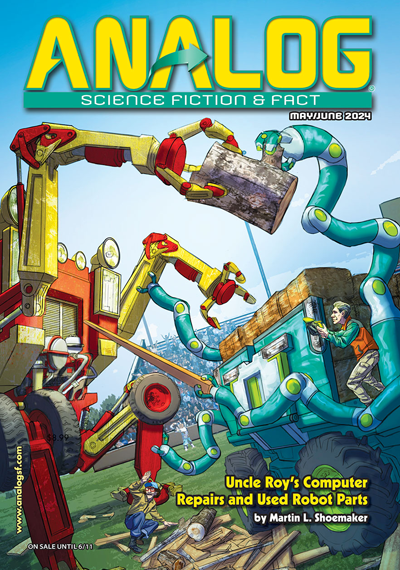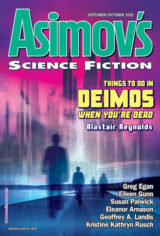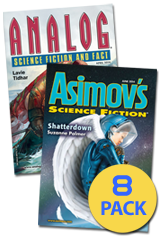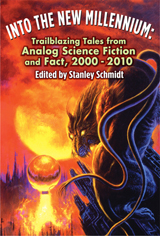
Welcome to Analog Science Fiction and Fact! Featuring award-winning authors, compelling fiction stories, intriguing science fact articles, editorials, news, reviews … Travel to the edges of the universe!
EXCERPTS:
Uncle Roy’s Computer Repairs and Used Robot Parts
Martin L. Shoemaker
POETRY:
Gravity
Pam Yve Simon
Get Your Subscription Delivered to Your Door! Shop Now!
Many people know all too well that an outbreak of pandemic proportions can leave large amounts of the population with long-lasting health issues. . . . .
OVER 90 YEARS OF AWARDS
Analog Stories
- 39 Hugo Awards
- 23 Nebula Awards
Analog Editors
- 7 Hugo Awards for Best Editor
Analog Science Fiction and Fact Magazine
- 8 Hugo Awards for Best Magazine!
FROM THE EDITOR
Welcome to Analog Science Fiction and Fact! A lifelong appreciation of science fiction has led me to an incredibly fulfilling career with Analog…
ABOUT ANALOG
Analog Science Fiction and Fact is the most enduring and popular science fiction magazine in history. Launched in 1930, Analog offers imaginative fiction reflecting the highest standards of scientific accuracy, as well as lively fact articles about current research on the frontiers of real science. A guiding principle for both fiction and provocative opinion columns is the exploration of the impact of science and technology on the human condition.
AUTHOR’S CORNER
Meet the pantheon of Analog Science Fiction and Fact authors. In addition to a Who’s Who of outrageously famous writers, you’ll also find short bios of authors in the current issue, in-depth factual articles examining the processes particular authors utilize, and more. Visit often – there’s always something new to discover!
It has been said that teaching kids is a bit like the Peace Corps slogan: it’s the toughest job you’ll ever love. But what happens when you mix surly teens with some (very) heavy machinery? Well, that sounds like a job for “Uncle Roy’s Computer Repairs and Used Robot Parts,” by Martin L. Shoemaker, our lead story for May/June.
Then our fact articles this time out will be a pair of Science Behind the Story pieces, one for Edward M. Lerner’s “The Dark at the End of the Tunnel” and one for “Project: Desert Sparrow,” by Chana Kohl, the subjects of which will become apparent when you read their eponymous sister stories.
THE RIVETS
Practical resources for readers and writers, including the Analog Index, Writer’s Submission Guidelines, upcoming Science Fiction events, News, and more.
Uncle Roy’s Computer Repairs and Used Robot Parts
by Martin L. Shoemaker
Roy Harris perched on a stool in front of his new shop door, very carefully filling in the letters that Martha had sketched out on the window. She had a steady eye for that sort of thing. He could stay within the lines, but don’t ask him to put the lines in the right places, at least not in the real world. His old hands shook too much.
Back in his old software design studio, every line had been meticulously placed. Customers found it easier to read the designs when he put in attention to detail.
Roy shook his head. He had no more software design customers. No more morning scrums, no more chasing the big defense contracts. No more of the daily rat race. He was retired now. READ MORE
Small Minds
by Tom Jolly
Chapter 1: OMF in LEO
There was a point—I’m not entirely certain when it happened—that I had collected together enough of my components to have a coherent thought beyond the scope of my most basic urges and needs.
It wasn’t long ago, perhaps a few Earth-days, that I was a single drifting component in orbit around the Earth, a microscopic cluster of a few million atoms, whose sole directive was to locate and attach myself to other similar components. Toward this effort, I could detect a very weak signal down below the milliwatt level from the other components, all seeking one another. Some components were specialized to pulse a “find me” signal periodically, while others, like me, had a built-in thruster and attitude control jets: all microscopic. Mere motes drifting in space, seeking out other motes in orbit. To someone on Earth, the “find me” signals would seem like noise, a susurration of electronic breath, too weak to mean anything, coming from too many sources and lacking any real data. READ MORE









